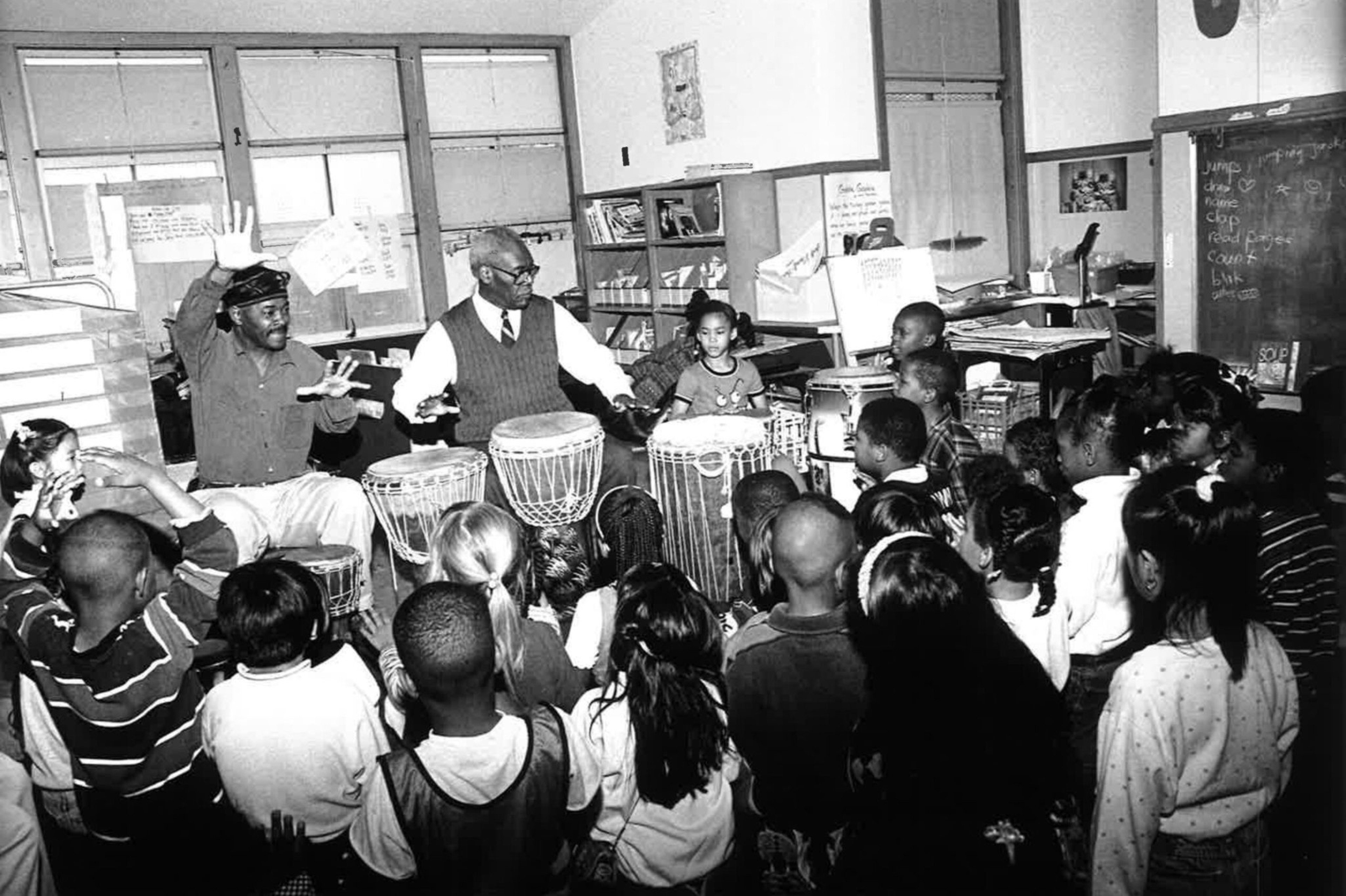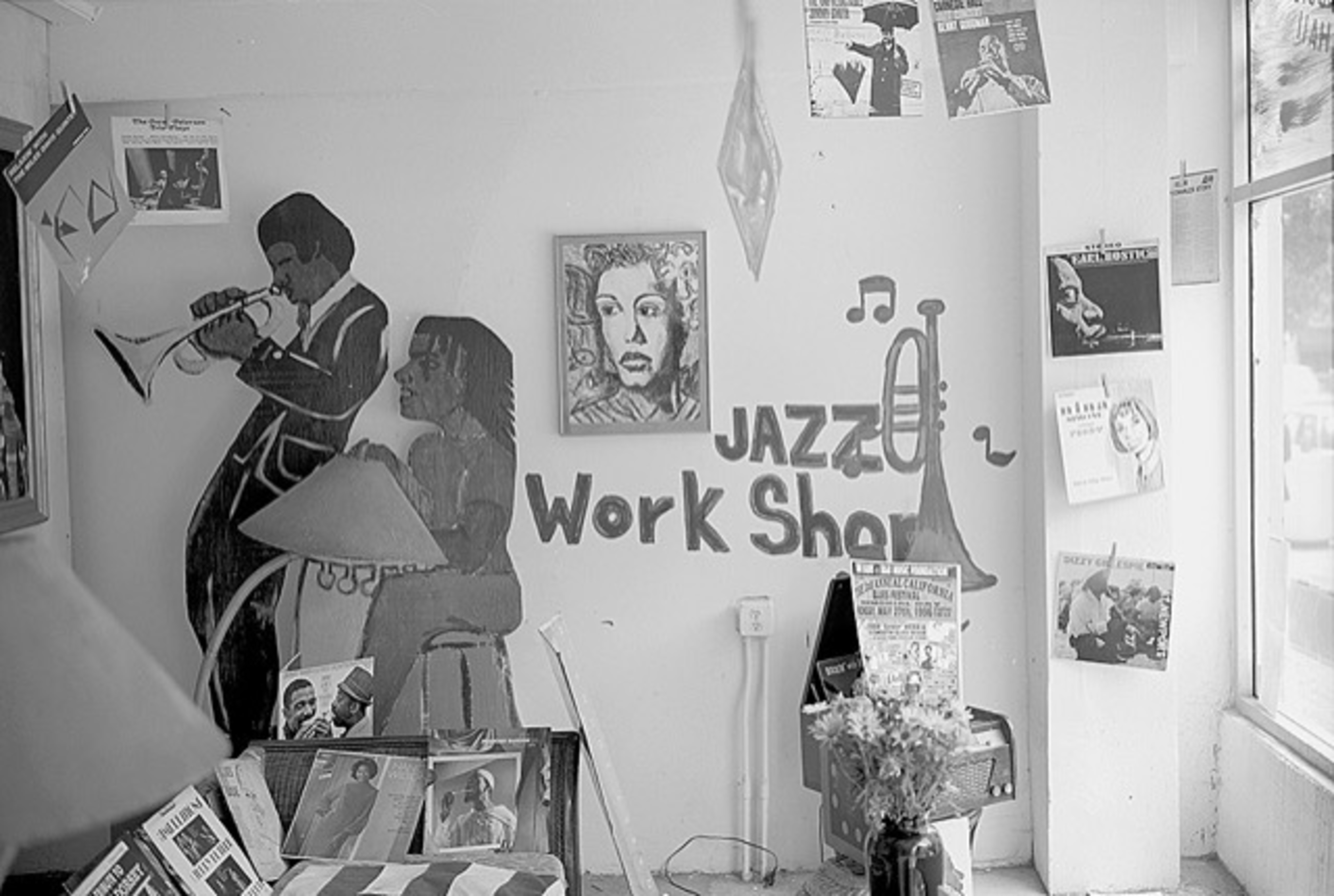Gallery of 3 photos
the slideshow
Murals of civil rights leaders at Rosa Parks Elementary School and Booker T. Washington Community Center are just some of the physical reminders of the imprint Melvin Douglas Simmons left on the Fillmore District.
Simmons, who died of sickle cell anemia on March 19, moved to San Francisco from Philadelphia in 1974 with a dream of helping local youth discover their untapped artistic potential.
He ultimately gave life to his dream by creating Culture on the Corner, an organization focused on cross-cultural education and collaboration on community murals.
Simmons’ family, local dignitaries and community leaders recently gathered at the African American Art and Culture Complex, to honor Simmons and reflect on his lasting impact on the Fillmore.
Harlem of the West
Upon arriving in San Francisco, it didn’t take Simmons long to make his presence felt in the Fillmore. He quickly became a friend, mentor and brother to many.
People who knew Simmons in those days say it was not unusual to see a line of kids trailing behind him as he walked the streets of San Francisco, sporting one of his stylish hats and a trademark smile that made people feel like they had more to give.
Simmons lived in Fillmore at a pivotal time for Black culture and saw the neighborhood change drastically over his lifetime. When he arrived, San Francisco was home to nearly 100,000 Black residents, but by 2000, only about 60,000 remained.
Photographer and co-author of the Harlem of the West—a book dedicated to the Fillmore’s jazz era (opens in new tab)—Lewis Watts, a close friend to Simmons, experienced the neighborhood in its prime.

In an interview with The Standard, Watts recalled one of his first visits to the Fillmore—a lively summer night in 1964: The street was jumping, people were dressed to the nines and music spilled out of the stores onto the sidewalks. Black-owned restaurants and bars lined the streets.
This was the Fillmore District where Watts got to know Simmons. The two bonded over a mutual affinity for photography and preservation of the neighborhood’s Jazz culture.
Now, Watts’ experience is foreign to many living in the neighborhood. “Urban renewal” projects (opens in new tab), gentrification and rising rents have dramatically reshaped the Fillmore—and pushed out many Black residents in the process. When Watts returned years later, he said he no longer recognized the community.
Rev. Arnold Townsend, who spoke at Simmons’ memorial, underscored Watts’ recollections of the Fillmore. Townsend, who serves as vice president of the San Francisco branch of the NAACP and has called the Fillmore home for half a century, told The Standard that he has witnessed the steady dissolution of the Black community in the neighborhood.
Without the community organizing and preservation efforts of locals like Simmons, Townsend said, much of the Fillmore’s history might have been erased entirely.
“People like Mel are essential, because we’re living in a time where the African American community is the only community in San Francisco that is losing people every year,” Townsend said.
Thanks to Simmons’ passion for fashion, art and engaging with neighborhood youth much of the Fillmore’s former vibrancy lives on—both in the form of murals he helped install and in the neighborhood ephemera he collected.

‘Underground Railroad of Culture’
In 1983, Simmons founded Culture on the Corner, a multifaceted program and community gathering space committed to cross-cultural engagement and building meaningful relationships between young artists and their neighbors.
During its operation, Culture on the Corner hosted camping trips to Native American reservations, visits to the Mission District to discuss cooperation with merchants, and workshops in Chinatown with various cultural organizations.
“He was the conductor to the underground railroad of culture,” said Sheryl Davis (opens in new tab), director of the Human Rights Commission.
Simmons wanted to highlight the importance of respect toward other cultures and the pursuit of knowledge, proving essential in a polarized yet diverse San Francisco.
“Whether he was bridging cultural differences for our residents with his Culture on the Corner program, or orchestrating the creation of murals at key San Francisco community centers and institutions, he paved the way for countless San Franciscans to follow their artistic spirit, wherever it may take them,” Mayor London Breed said in a written statement delivered at the memorial service.
As young creatives in the Fillmore, twin sisters Melonie and Melorra Green needed Simmons when they were trying to fill their neighborhood with art. In 2008, the two began to organize art walks and collaborative mural projects on vacant buildings when they were met with resistance.
There were people who didn’t want the neighborhood to change and people who simply didn’t want creative events with Black queer people at the helm, Melonie Green said.
But Simmons advocated for the two as a prominent figure in the Fillmore district, knowing that his endorsement would ensure their space. Aside from supporting their artistic movements, he even showed up to move furniture and coordinate events at their gallery.
“He was a stand for the flow and currency of creativity, as we were at the helm of change in the Fillmore,” Melonie Green said.
After Simmons’ death in March, his relatives and chosen family promised to not only honor their brother with words but with actions. His San Francisco legacy carved an everlasting path toward community connection and the value of childrens’ art within.
“If there’s something you love doing, let it take care of you,” Simmons said in a video provided by the AAACC. “That’s what I try to instill in the young people that I know, that’s what my center is all about.”
Because Simmons was in the hospital for so long in the past year, he lost the lease on his Fillmore home in the months leading up to his death. In losing his house—according to his ex wife, who remained a friend—Simmons lost thousands of photos collected over a lifetime.
Though his friends and loved ones have no way of recovering that valuable visual archive, Rev. Townsend said he and Simmons’ family now plan to memorialize him through a community project. And while they’re not ready to share the details, they said it will preserve his personal legacy—and the culture of the neighborhood he loved so much.



